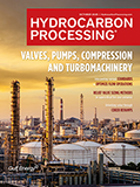Crude oil
China cuts West African oil imports as refiners cite delays, full tanks
Chinese loadings of West African crude declined from 19-month highs in May as delivery delays, port congestion and full tanks scuppered interest from private 'teapot' refiners.
Lifting of US crude export ban will impact process safety management
Since the Arab oil embargo in the 1970s, the US government has restricted the export of crude oil to curb dependence on crude oil imports.
Industry Metrics
US refinery margins recovered as product markets were supported by strong domestic gasoline demand and temporarily tight sentiment fueled by the switch to summer-grade gasoline.
Iran secures two more European refiners as customers for its oil
Both refiners bought Iran's oil before sanctions against the country's nuclear program effectively halted its shipments to Europe, which had accounted for more than a third of its exports.
Refining’s silver lining fades at Exxon, Chevron
Growing fuel inventories and weak demand are now hammering the refining industry, turning a typical advantage for integrated oil companies on its head.
Looming gasoline glut threatens global recovery in crude oil prices
Several major gasoline importing countries have started to export, as excess supplies of fuels overflow storage facilities and erode refinery profits.
Kuwait oil, gas workers end three-day strike
Kuwaiti oil and gas workers have ended a three-day strike that had temporarily cut the OPEC member's crude production by nearly half, according to the trade union.
Nigeria’s NNPC fights for more crude cargoes to exchange for gasoline
The dispute has delayed some of the country's monthly oil export programs and added to confusion over just how much crude Nigeria has at its disposal to exchange for gasoline.
ExxonMobil exports first cargo of offshore US oil to Rotterdam refinery
The vessel carrying offshore oil from the US Gulf of Mexico departed from Gramercy, Louisiana, in early April and is expected to arrive in Rotterdam on April 19, according to the data.
China’s crude import growth slows as refining inventories swell
Independent refineries in China have been ramping up their crude processing rates and boosting fuel sales as low global oil prices provide higher margins.

- China's first coal-to-chemicals project with green hydrogen starts commercial operations 11/20
- Norsk e-Fuel and Braskem partner to turn captured carbon into long-lasting products 11/20
- Nigeria's Dangote refinery delays CDU maintenance to end of January 2026 11/20
- Technimont attends ground-breaking ceremony of Tengiz Gas separation Complex in Kazakhstan 11/20
- 42% of U.S. energy/critical infrastructure providers exposed to weaponized AI and email attacks 11/20
- EIA: U.S. crude stocks fall on higher demand, fuel inventories rise 11/20




